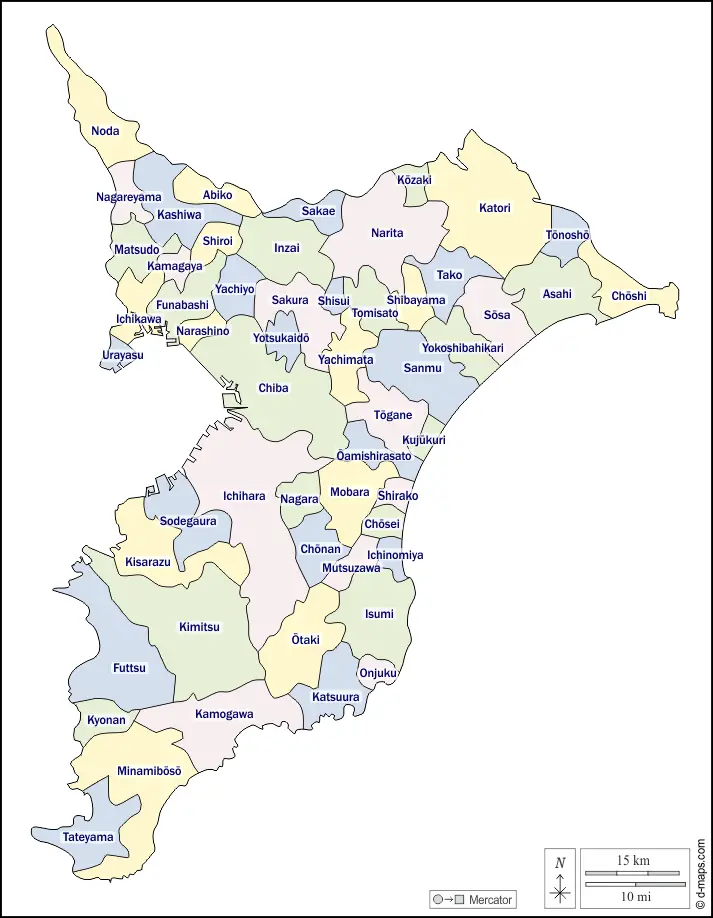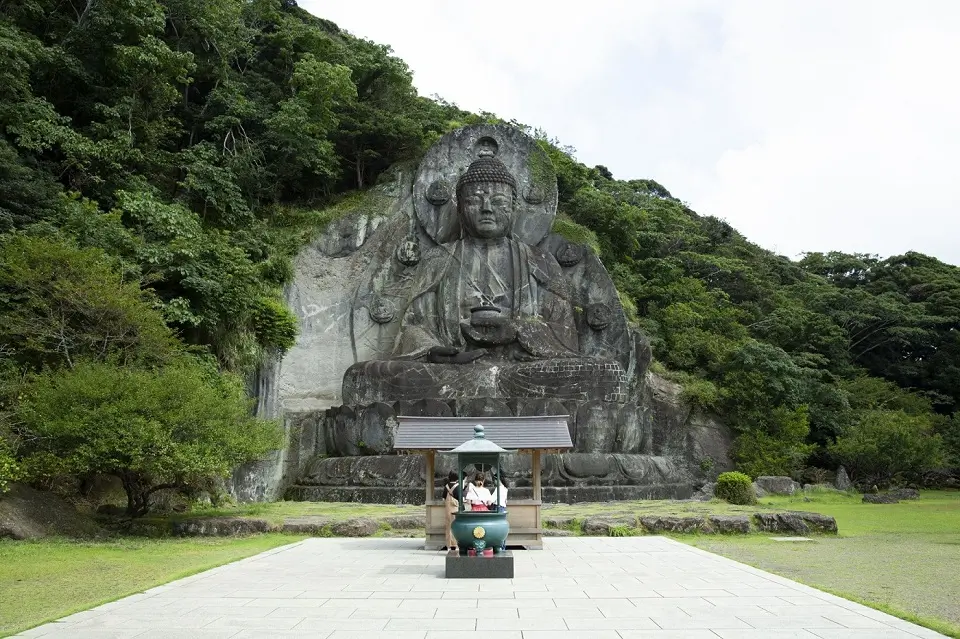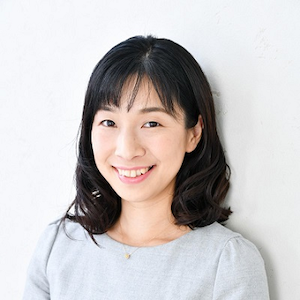Living in Chiba Prefecture – 2023 Guide

Chiba Prefecture (千葉県) is located east of Tokyo and is home to some of the best beaches in the Kanto region and the Disney resort. The prefecture of Chiba is also home to the international airport Narita, known as the busiest airport in Japan.
Chiba City is the capital of the prefecture, one of the Kanto region’s primary seaports, which handles the highest volumes of cargo in Japan. Famous for its beaches, a large part of Chiba comprises the rural Boso Peninsula. The peninsula offers many seaside resorts popular among Tokyo residents hoping to escape the city.
Why to Live in Chiba
The glitz and glam of Tokyo prefecture easily attract hopeful residents to Japan. It’s the largest and most popular city in the country. However, many residents of the Kanto region have quickly figured out that, in many ways, the cost of living in Tokyo heavily outweighs its perks. Instead of living in any of the 23 wards, also known as cities, within Tokyo, many of Japan’s residents have made their homes in neighboring prefectures like Chiba to cut costs while still living within an hour’s distance of central Tokyo.
Chiba is easily accessible from many major Tokyo train stations on the JR Keiyo, Sobu, and Joban Lines. Although prices vary among cities and apartment sizes, the average rent for major cities in Chiba prefecture is about ¥60,000 for a single person. Compared to the average rent in Tokyo being around 80,000, Chiba is a low-cost option for those who value a slower lifestyle with accessibility to Tokyo and wish to cut down their cost of living in Tokyo.
Where to Live in Chiba Prefecture


Due to Tokyo’s high cost of living, many people often commute to Tokyo from nearby prefectures. The proximity of many of Chiba’s cities to Tokyo makes it an ideal location for those interested in having a bigger space for a smaller budget. Here are a few ideal locations in Chiba Prefecture that offer the most convivence to Tokyo at the best price.
Kashiwa City
Kashiwa is located in the northwestern part of Chiba Prefecture and is part of the Greater Tokyo Area. With a population of over 400,000, Kashiwa is a bustling and thriving city known for its mix of urban and suburban living and its accessibility to Tokyo and other neighboring cities.
Kashiwa is well-connected to the rest of the Greater Tokyo Area through several train lines, including the JR Joban Line and the Tobu Urban Park Line (previously known as the Tobu Noda Line). The Tsukuba Express Line, which connects Tokyo to the science city of Tsukuba in Ibaraki Prefecture, also passes through Kashiwa, making it a convenient transportation hub for commuters.
The city is famous for its shopping and entertainment options, with several malls and shopping centers, such as Kashiwa Station’s Mallage Kashiwa and the Aeon Mall Kashiwa. Additionally, Kashiwa offers various dining and nightlife options, making it a popular destination for locals and visitors alike.
Kashiwa is home to Kashiwanoha Park, a large park with beautiful green spaces, recreational facilities, and a lake. It’s a popular spot for families and people who enjoy outdoor activities. The Kashiwanoha Campus City, a part of the city where the University of Tokyo, Chiba University, and other research institutions are located, is another interest in Kashiwa.
Regarding sports, Kashiwa is home to the Kashiwa Reysol, a professional football club that plays in the J.League, Japan’s top football division. The team’s home ground is the Hitachi Kashiwa Soccer Stadium, which can hold up to 15,000 spectators.
Kashiwa’s urban convenience, suburban charm, and excellent transport connections make it an attractive place to live and work in the Greater Tokyo Area.
Ichikawa City
Ichikawa is situated on the eastern bank of the Edogawa River. This river serves as a natural border between Chiba Prefecture and Tokyo Metropolis. Please note that though people call it the Edogawa River, the correct name is Edo River because “Gawa” means river in Japanese.
Ichikawa City has a population of approximately 370,000 and is a thriving residential and commercial area.
The first station of Ichikawa-Shi adjacent to Tokyo is Urayasu. From Otemachi station in central Tokyo, it takes just 19 minutes to reach Urayasu. You will find a large population of foreigners living in the periphery of Urayasu, mainly in Myoden and Gyotoku. Both these stations are respectively 23 and 24 minutes away from Otemachi.
Ichikawa is well-connected to central Tokyo and other parts of the Greater Tokyo Area through various train lines. These train lines include the JR Sobu Line, the JR Musashino Line, and the Toei Shinjuku Line. These transportation options make Ichikawa an attractive and convenient place to live for people working in Tokyo.
The city offers a mix of urban amenities and green spaces, providing a balanced lifestyle for its residents. One of the most notable parks in Ichikawa is the Hokekyoji Temple grounds, home to a historic Buddhist temple founded in 1261. A beautiful and peaceful park around the temple is a treat to the eyes during the cherry blossom season.
Ichikawa is also known for its cultural attractions, such as the Chiba Museum of Science and Industry and the Ichikawa City Cultural Hall, which hosts various events, concerts, and performances. Additionally, the city boasts a range of shopping and dining options for residents and visitors to enjoy.
Another point of interest in Ichikawa is the Gyotoku Bird Observatory in the Gyotoku Wild Bird Park. The park is a habitat for numerous bird species and is an important stopover for migratory birds. Visitors can learn more about the local ecosystem and observe the diverse birdlife at the observatory.
Inage-Ku
For those interested in concerts, exhibitions, or sporting events, Inage is likely the place you want to be.
Inage-Ku is known for its rich history and cultural attractions. One of its most famous landmarks is the Inage Seaside Park, which features a beautiful beach and recreational facilities for families to enjoy. Inage is also home to several educational institutions, including Chiba University and the Chiba Institute of Technology.
In terms of transportation, Inage enjoys very convenient connections with other parts of Chiba and the Greater Tokyo Area through various train lines, such as the JR Keiyo Line and the JR Sobu Line. The easy access to Tokyo and other neighboring cities makes Inage a convenient place to live and work.
Inage also boasts a rich history, with several important temples and shrines. The Inage Sengen Shrine is one of the most famous, dedicated to the Shinto deity of water, and is believed to have been established in the 9th century.
Overall, Inage is a vibrant and thriving ward, offering a mix of history, culture, and modern conveniences for residents and visitors alike.
Sightseeing Locations in Chiba Prefecture


Despite its reputation as a transit hub, Chiba offers residents fantastic seaside resorts, exciting entertainment, and historical landmarks that bring city dwellers from all over the country. Here are a few key places in Chiba we think you should visit while living there.
Tokyo Disney Resort
Although it has Tokyo in the name, the Tokyo Disney resort is located firmly in Urayasu City in Chiba prefecture. It consists of two theme parks, Tokyo Disneyland, modeled after Disneyland in California. Opened on April 15, 1983, it was the first Disneyland opened outside the United States and the only Disney resort in the world not operated by the Disney Company. The resort also has another theme Park DisneySea, the only one worldwide.
Funabashi H.C. Andersen Park
Marked by a giant Dutch windmill, the Funabashi H.C. Andersen Park has different flowers blooming throughout the year. The landscape resembles Denmark, especially during the Tulip season, and brings visitors from all over Asia. Springtime is especially popular since the park is a great Sakura (cherry blossom) viewing spot.
Naritasan Shinshoji
Naritasan Shinshoji is a temple that enshrines Fudō Myō-ō — one of the guardian deities of Buddhism. Recently, the temple has become a power spot for matchmaking despite the reputation of its associated deity Fudomyo Naritasan, who breaks off all ties.
The town was originally built around the temple and packed with must-see attractions. Naritasan Omotesando has earned a reputation as Koedo (小江戸) since many Edo-period buildings remain there today. A local delicacy of the town is unagi (鰻) or el). You can purchase unagi at many local food vendors to eat as snacks or to enjoy as a proper meal.
Nokogiriyama
Nokogiriyama no Jigoku Nozoki (Peek into Hell) is ideal for outdoor adventure and hiking. It’s located on the observation platform of Nokogiriyama, which looks like a sawtooth nokogiri (鋸) and is home to over 1,500 statues of Hyakushaku Kannon and stone Buddhist images. After your hike, visit the Nihonji temple, whose grounds cover the entirety of the mountain.
Kameiwa Cave
You might have seen a picture of Kameiwa Cave on social media several times. It became a popular tourist destination in 2015 as the beautiful cave and cascading waterfall became known as the most liked cave online on Instagram. Although artificial, the cave offers views that feel like something from a Studio Ghibli film. The best times to visit the cave are on fall and spring mornings around the equinox between 6-8 a.m.
Conclusion
Chiba is a cool place to live because it’s by the sea and has some really nice beaches. This means you can enjoy fun days at the beach, play in the water, or just relax.
Chiba is also close to Tokyo, so it’s easy to commute to Tokyo if you work there or visit big city spots and then come back to a quieter home.
The cost of living in Chiba can be cheaper, especially for bigger homes or places with gardens. There are also fun places like Disneyland and big shopping malls. Plus, Chiba has some beautiful nature spots and parks to visit with family and friends.


A bilingual native Japanese, Naoko accumulated 14 years of experience in multinational companies’ diverse fields like HR, accounting, and sales support after graduating from the State University of New York. She is a co-founder of ReachExt K.K. and EJable.com.

